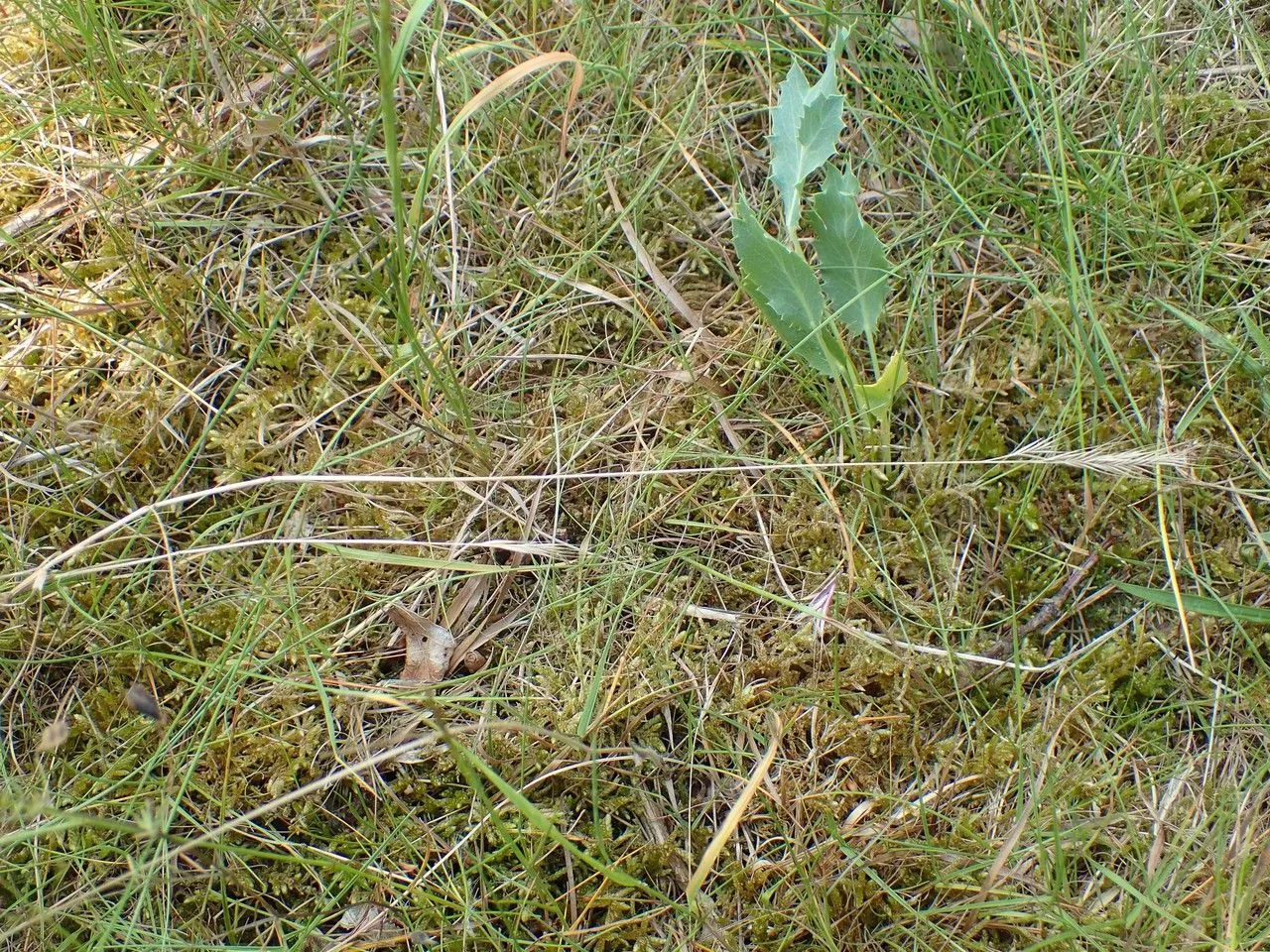
Author: Gray (L.)
Bibliography: “Nat. arr. Brit. pl. 2:124. 1822 (“”1821″”)”
Year: 1753
Status: accepted
Rank: species
Genus: Vulpia
Vegetable: False
Observations: Unknown
Brome fescue, scientifically known as Vulpia bromoides, is a species within the Poaceae family, a diverse group commonly referred to as grasses. This particular plant was classified by Louis Gray, and its detailed description was first published in “Nat. arr. Brit. pl. 2:124” around 1822, although the document was originally marked as from 1821.
Brome fescue is an annual grass that is known for its rapid growth and adaptability to a variety of environmental conditions. It tends to favor open, disturbed areas such as roadsides, fields, and meadows, where it can often form dense stands, sometimes outcompeting other vegetation. The plant’s slender, erect stems can reach various heights, typically up to 50 centimeters, and it produces narrow, linear leaves with finely serrated edges.
Vulpia bromoides has a unique reproductive strategy, featuring spikelets that bear florets arranged in an open, airy panicle. These spikelets are often purplish or green, giving the plant a delicate appearance, especially when swaying in the breeze. The seeds are light and can be easily dispersed by wind, animals, and human activity, contributing to its broad distribution.
Though detailed ecological observations specific to Brome fescue are lacking, it is a known fact that plants from the Poaceae family play significant roles in their ecosystems. They provide habitat and food for various wildlife species, contribute to soil stabilization, and can influence plant community dynamics.
Despite its common presence, Brome fescue can sometimes be considered a weed, particularly in agricultural settings where it may interfere with crop production or pasture quality. Nevertheless, its ability to thrive in less fertile soils makes it a resilient species synonymous with persistence and adaptability.
Brome fescue’s management in agricultural and natural landscapes often focuses on balancing its growth to harness its benefits while mitigating potential negative impacts. Effective control measures include proper land management practices such as crop rotation, selective herbicide use, and encouraging the growth of competitive perennial grasses and legumes.
Overall, Vulpia bromoides serves as an exemplary species within the Poaceae family, demonstrating both the benefits and challenges of managing naturally prolific grasses.
En: Brome fescue, Six-weeks fescue, Squirreltail fescue, Silver grass, Brome Six-Weeks Grass, Desert fescue, Squirrel-Tail Fescue, Barren fescue, Squirrel-tail vulpia
Ar: برومويدات فولبيا
Cs: Mrvka sveřepovitá
Da: Langstakket væselhale
Nl: Eekhoorngras
Fi: Oravanhäntänata
Fr: Vulpie queue-décureuil, Vulpie faux-brome, Vulpie queue-d’écureuil, Vulpie faux brome
De: Trespen-Federschwingel, Trespen-Fuchsschwingel, Trespenfederschwingel, Trespenfuchsschwingel
It: Pal√®o, Paléo bromoide
No: Ekornsvingel
Pl: Wulpia stokłosowata
Pt-br: Cevadinha-braba, Festuca-cevadinha
Sv: Ekorrsvingel
Cy: Peisgwellt cynffon gwiwer, Peisgwellt Anhiliog, Peisgwellt â Chynffon Gwiwer
Taken Jan 1, 1900 by EOL − Encyclopedia of Life (cc-by-nc)
Taken Jun 21, 2017 by Yoan MARTIN (cc-by-sa)
Taken Jun 21, 2017 by Yoan MARTIN (cc-by-sa)
Taken Jun 21, 2017 by Yoan MARTIN (cc-by-sa)
Taken Jun 21, 2017 by Yoan MARTIN (cc-by-sa)
Taken Jan 1, 1900 by EOL − Forest & Kim Starr (cc-by)
Taken Mar 28, 2014 by EOL − Lew Stringer (cc-by-nc)
Taken Jun 21, 2017 by Yoan MARTIN (cc-by-sa)
Taken Jun 21, 2017 by Yoan MARTIN (cc-by-sa)
Taken Jun 21, 2017 by Yoan MARTIN (cc-by-sa)
Taken Jun 21, 2017 by Yoan MARTIN (cc-by-sa)
Taken Feb 3, 2008 by EOL − Keir Morse (cc-by-nc-sa)
Taken Jun 4, 2021 by Michaël Chauvet (cc-by-sa)
Taken Jun 15, 2014 by Tela Botanica − Quentin LEBASTARD (cc-by-sa)
Taken May 23, 2008 by Tela Botanica − Mathieu MENAND (cc-by-sa)
Taken Jun 19, 2012 by Tela Botanica − Dominique REMAUD (cc-by-sa)
Taken Jun 9, 2019 by Tela Botanica − Gérard Leveslin (cc-by-sa)
Taken Jun 11, 2021 by eric moumout (cc-by-sa)
Taken Nov 25, 2022 by Oliveira Vander (cc-by-sa)
Taken May 3, 2020 by Guy Vanhoof (cc-by-sa)
Taken Nov 5, 2020 by Jodi Dowling (cc-by-sa)
Taken Jun 3, 2012 by Tela Botanica − Liliane Roubaudi (cc-by-sa)
Taken Jun 27, 2013 by Tela Botanica − Bertrand BUI (cc-by-sa)
Taken May 30, 1849 by Tela Botanica − Herbier PONTARLIER-MARICHAL (cc-by-sa)
Taken May 31, 1853 by Tela Botanica − Herbier PONTARLIER-MARICHAL (cc-by-sa)
Taken Jan 1, 1970 by Photoflora – L’Abbé COSTE (©)
Ph maximum: 5.5
Ph minimum: 5.0
Light: 9
Atmospheric humidity: 3
Soil nutriments: 5
Family: Myrtaceae Author: (F.Muell.) K.D.Hill & L.A.S.Johnson Bibliography: Telopea 6: 402 (1995) Year: 1995 Status:…
Family: Rubiaceae Author: Pierre ex A.Froehner Bibliography: Notizbl. Bot. Gart. Berlin-Dahlem 1: 237 (1897) Year:…
Family: Sapindaceae Author: Koidz. Bibliography: J. Coll. Sci. Imp. Univ. Tokyo 32(1): 38 (1911) Year:…
Family: Asteraceae Author: A.Gray Bibliography: Pacif. Railr. Rep.: 107 (1857) Year: 1857 Status: accepted Rank:…
Family: Fabaceae Author: Medik. Bibliography: Vorles. Churpfälz. Phys.-Ökon. Ges. 2: 398 (1787) Year: 1787 Status:…
Family: Aspleniaceae Author: (Cav.) Alston Bibliography: Bull. Misc. Inform. Kew 1932: 309 (1932) Year: 1932…